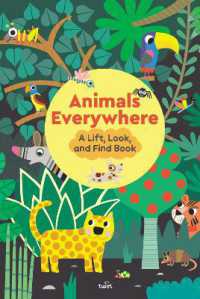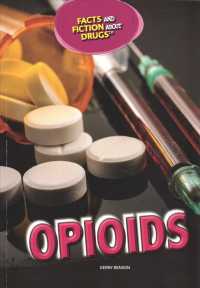Full Description
This book draws on the lived experience of sounds capacity to move and shake us in direct, subtle and profound ways through speech, location sound, and music in documentary film. The associative, connotative and sheer emotive power of sound has the capacity to move and shake us in a myriad of direct, subtle and often profound ways. The implications of this for its role as speech, location sound, and music in documentary film are far-reaching. The writers in this book draw on the lived experience of sounds resounding capacity as primary motivation for exploring these implications, united by the overarching theme of how listening is connected with acts of making sense both on its own terms and in conjunction with viewing. The resulting thirteen essays of Soundings: Documentary Film and the Listening Experience cover films made from WWII to the present day in locations across Europe and the Americas, and in styles ranging from political propaganda, industrial promotion and educative exposition, to more aesthetically-driven films taking their bearings from avant-garde art. The authors draw on their experience in scholarly research, practice-as-research, and in the aesthetic and technical practice of documentary filmmaking. This mix of perspectives aims to widen and deepen the outlook of the recent and growing academic interest in the topic of documentary film sound.
Contents
Introduction; Stories from a stay at the Arena Hotel; Weave Me a Rainbow; ˈThe march, the march of colour and patternˈ: Music and cinematography at the service of the creative promotion of the 1960s Scottish woollen industry; Sonicules: Designing drugs with sound: approaches to 69 sound design for flm, audiovisual performance and interactive sonifcation; Auralising Action Space: channelling a sense of play in 85 documentary sound design; ˈThe flm looks like how Ornette soundsˈ: Shirley Clarkeˈs music documentary Ornette: Made in America Rosa Nogués; Progress Music; Creative use of voice in non-fction narrative flm: an examination of the work of Peter Mettler; Documentary flm as a backdrop for active thinking; Centrepiece: The unwanted sound of everything we think we want; The ˈAppassionataˈ Sonata in A Diary for Timothy; A ˈSymphony of Britain at Warˈ or the ˈRhythm of Workaday Britainˈ?: When the Pie Was Opened (1941) and the musicalisation of warfare; Building a sonic image of a nation: Finnish documentary and propaganda flms in the early decades of sound flm; Raúl Ruizˈs Now Weˈre Gonna Call You Brother and the 255 problem of the peopleˈs sonic representation; Afterword.








